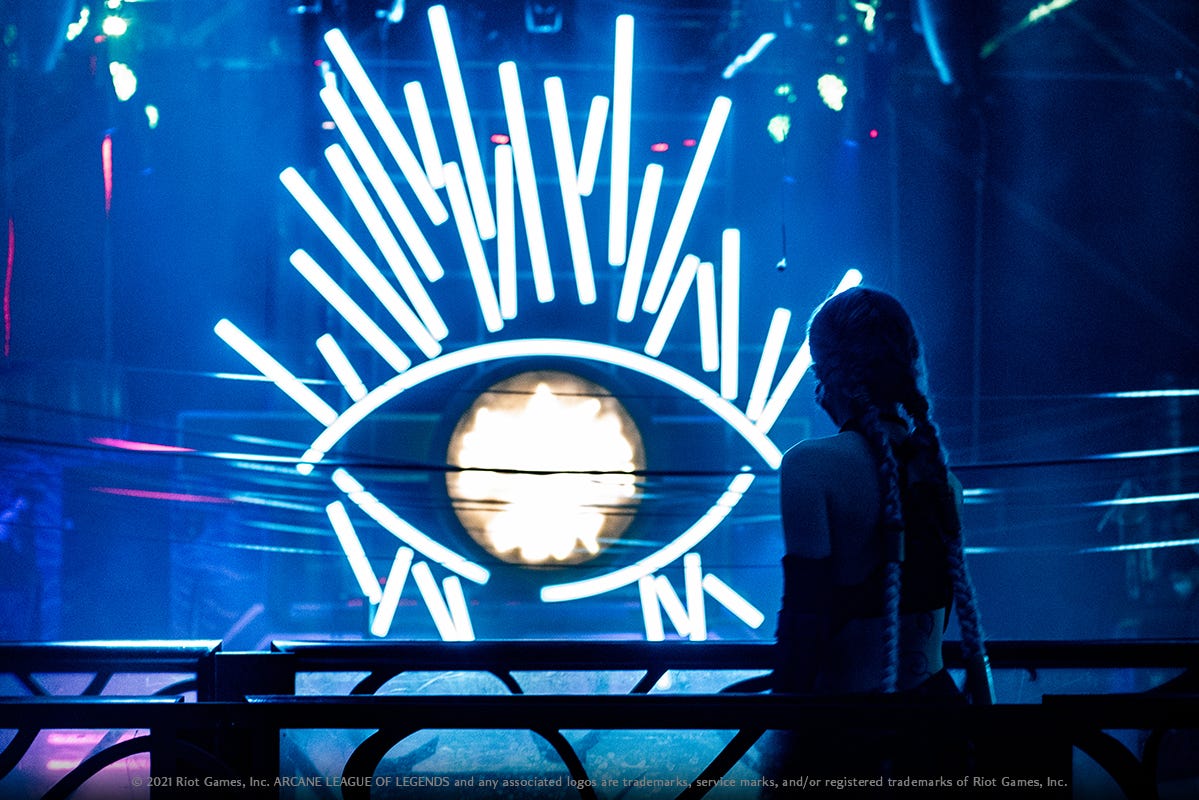
You’d think we’d be chill on a holiday week but NO. This is a BIG ONE.
Secret Cinema makes their US debut with an event based on a animated series based on one of the biggest video games in the world — and you know what it’s — wait. Wait. Go read the review.
But that’s not all. London calls with the return of Immersive Gatsby. There’s full on murder mystery games online, and coverage from our arts editor in LA.
More From The Review Crew
- The REVIEW CREW is working out this week so we can eat ALL OF THE THINGS on Thursday. We will be back next week.
- Dive into Last Week’s Review Crew show.
- Last week’s edition of the Rundown is right here.
- Last week’s Pick of the Week was revealed on our podcast and can be found at Everything Immersive!
Subscribe to our podcasts via Patreon for bonus content or find us ANYWHERE podcasts are found for the core ’cast: Apple Podcasts, Google Podcasts, Audible, Amazon Music, Stitcher, Spotify, and even YouTube!
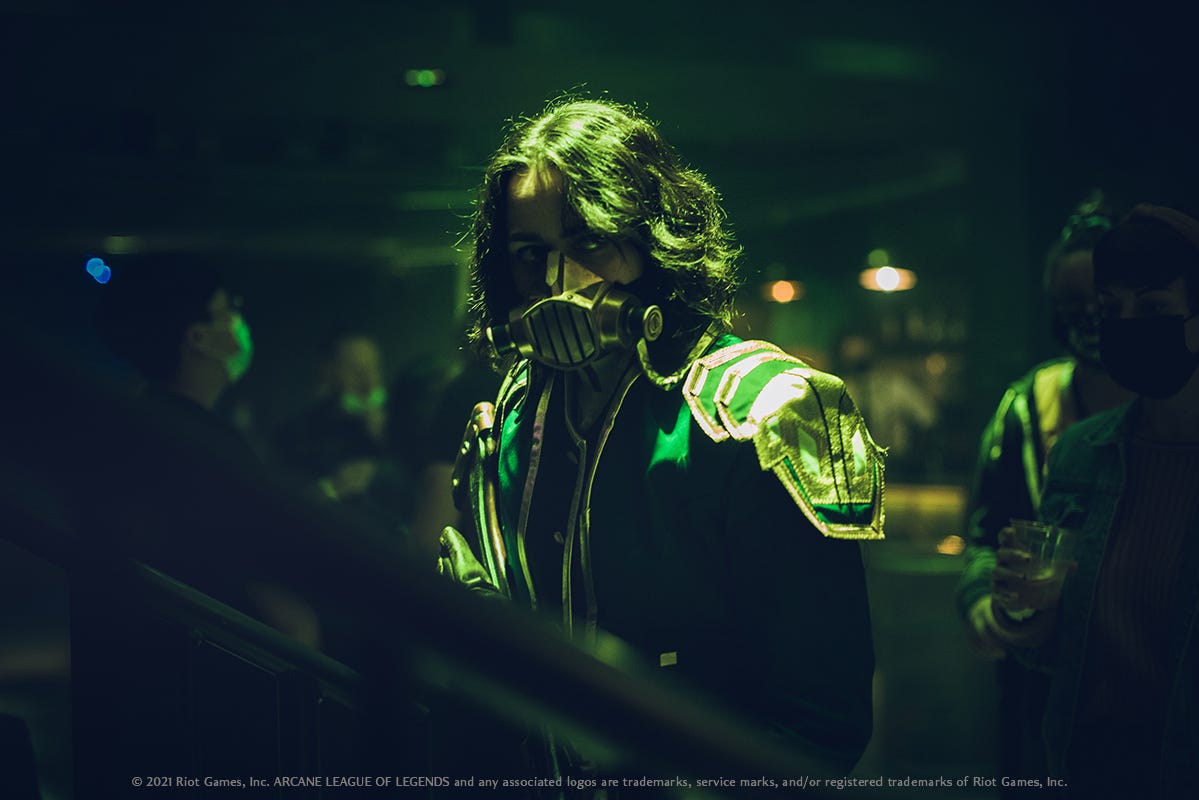
Arcane: Enter the Undercity— Secret Cinema/Riot Games
$70–140; Los Angeles (Central LA); Through Dec. 19, 2021
(Light spoilers follow.)
About halfway through Arcane: Enter the Undercity, the first full production from Secret Cinema’s US branch that’s based on the animated series from Riot Games, a rave breaks out.
Halfway through the rave, a fight breaks out. The crowd, having been revved up by the team of performers just moments before, is quickly shaped into a trench for our two pugilists to go at full steam. And then it’s right back to elaborate schemes, petty larceny, and fetch quests as everyone in The Lanes is out to get as much shimmer as they can get their hands on.
What’s “shimmer”? Well, if you watch the animated series Arcane — which is gorgeous and the #1 show on Netflix in every country around the world (save this one) and also accessible to folks like me who couldn’t tell a MOBA from a moocow — then you’ll know what it is. If you don’t: it’s your MacGuffin for the evening and that’s all you really need to know.
Secret Cinema have built a love letter to the show. Which is wild because no one outside of Riot Games, Netflix, and Secret Cinema had seen Arcane up until a few weeks ago. Yet it is all here, brought to life and fun as hell.
The whole thing is structured as a big sandbox game, with teams competing to smuggle the most shimmer, all while rivalries, brawls, and the aforementioned rave play out around and with us. For best results, watch at least the first three episodes of Arcane before going. That’s about two hours. Going in cold is pointless. If you don’t like the show: also pointless. But if you like what you see — I personally was surprised by how much I loved the series — you will lose your mind over what they built here. So PLEASE watch the show and make your choice based on that.
More thoughts soon.
— Noah Nelson, Publisher, from his forthcoming Full Review

Cirque du Sique: A Grave Affair — Immersive Arts Collective
$45; The Count’s Den, Los Angeles (Downtown); Through Dec. 19
Somewhere in the undead DNA of A Grave Affair is a Rocky Horror style show with an immersive twist begging to be electrified and raised up from the slab. It pokes its deliriously freaky little head out in the opening vignette as patrons enter The Count’s Den in downtown LA. Musters up its voice in the mouth of our funeral director styled MC (Brett Gustafson). It also flashes a dangerous edge in the sword dance of Delirium (Teake) and the masterful fireplay of Desire (Burdetta Jackson) in the part of the show that leans into the cirque part of the name. There’s even a really strong closer to the whole, ah, affair.
Yet the production never quite manages to find its footing.
The opening performance acts lean heavily on burlesque. Of which there’s nothing wrong, I really like burlesque as an artform and a vehicle for meaning making, but the sequences do less to tell a story than the attempts by the characters to add monologues to their bits. That most of them are dance routines programmed one after the other also means it feels longer than it is due to repetition of form.
The middle section, which drops patrons out into a sandbox format that uses the whole of The Count’s Den escape game space — a clever re-use to be sure — is uneven at best. Half the cast are game improvisers who are up for riffing off audience feedback and bringing soap opera stakes to the mix, while the other half at times didn’t seem entirely sure what their character’s deal was. So: high highs, but low lows, which is a drag. There’s a bit of immersive whiplash to the unintended effect.
There’s potential here, although less in the plot and lore that the troupe seems to be developing and more in the idea of a dysfunctional, damned circus family doomed to repeat the same tragicomic bits over and over. If Cirque du Sique decides to zero in on the characters and let them play off each other more they could summon up those late night double feature picture show vibes. The talent and enthusiasm is there, but it needs more time in the oven.
— Noah Nelson, Publisher
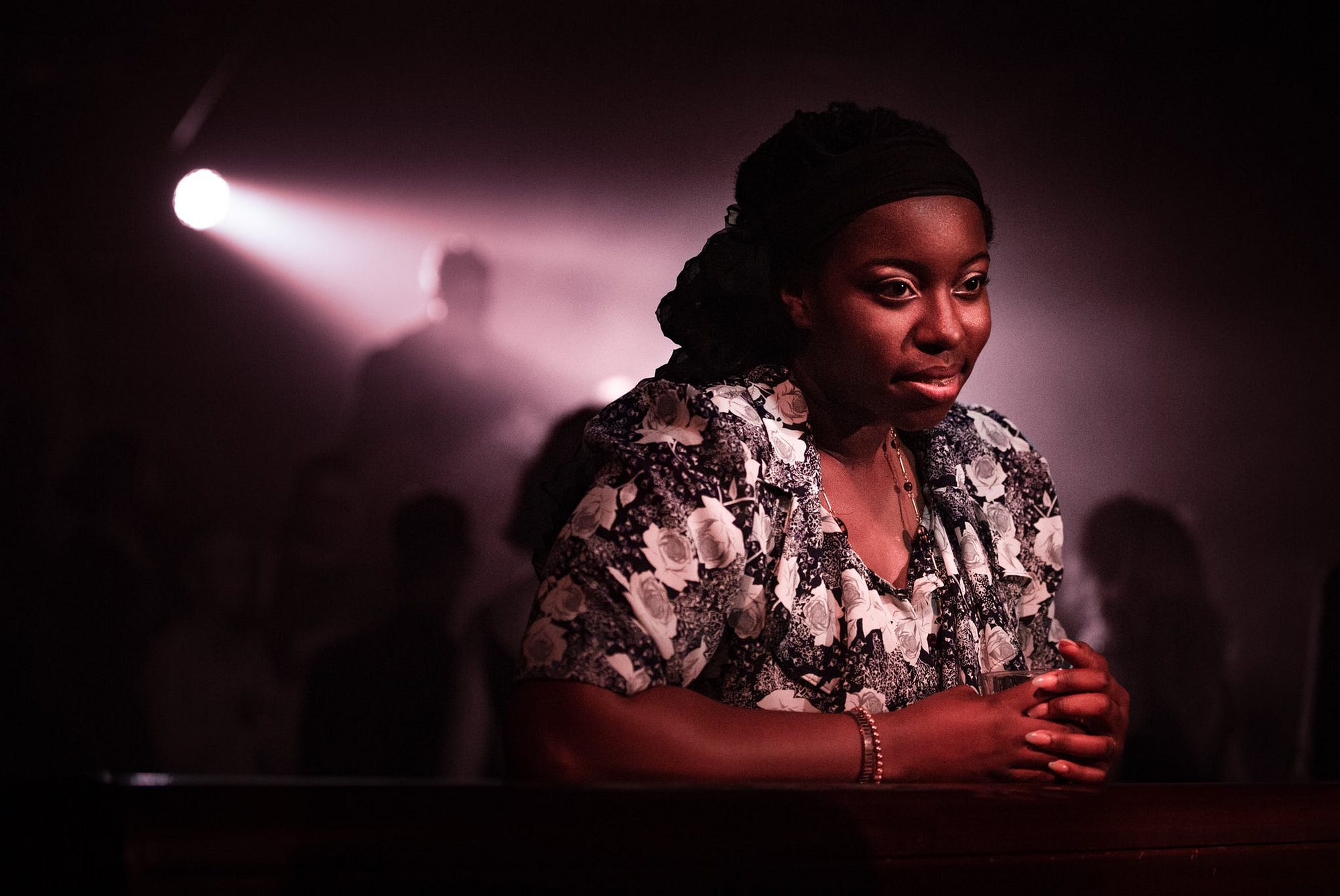
The Great Gatsby — Immersive Everywhere
£38–58; London, UK; through Oct. 30, 2022
I love a show where you can miss something.
This may sound like a drawback to some folks. After all, we’ve paid for The Thing, why don’t we deserve to see all of The Thing? However, one of my favorite aspects of immersive theatre is not just the environmental experience but the concept of “happening”: this is an event, this is an organic thing that’s occurring with me in it, and that we as humans can only be in one place at a time. The mark of a great show is that there are more things going on than I can reasonably take in within the realm of one visit — not just giving audience members the feeling of being ‘special’ for having seen something only a few got to, but motivating them toward repeat visits to see the things they missed.
Get No Proscenium’s stories in your inbox
Join Medium for free to get updates from this writer.
SubscribeSubscribe
Not only is Gatsby rife with these opportunities (the eponymous Jay’s party mansion now permanently installed in Mayfair is riddled with hidey-hole rooms where the dramatics play out of a wild party unravelling) but I catch glimpses of mini-quests going on that I’m missing out on: business cards being clandestinely handed between a guest and an in-show bouncer, a feather winking from behind one ear to another, someone whispering a password to a host. And even if you miss all these chances and simply sit in the main room without chasing any side-scenes, you’ll still see a unique show to most.
The Great Gatsby is a perfect example of egalitarian entrepreneurial theatre: everyone travels through time at the same pace but everyone experiences a different party in the same place. With an accessible price point and excellent quality of production, immersive beginners and old war dogs alike should crash the party as soon as possible.
— Shelley Snyder, London Curator

The Histories (Old Black Joe) by David Hartt & The Evening Redness in the West by Brian Jungen — The Hammer Museum
Free; Los Angeles, CA; Through Jan. 2, 2022
Currently at the Hammer Museum are two artworks spotlighting the transportive quality of sound.
First is The Evening Redness in the West by Canadian artist Brian Jungen. Jungen dismantles baseballs and leather home theater seats and rebuilds them into skulls and a saddle. These are connected to a DVD system and an amplifier casts out audio from western films. With each gunshot, explosion, or brawl the saddle bucks across the gallery on its wooden frame. The skulls and saddle embody violent stereotypes of Indigenous people as depicted in popular culture. The presentation is disarming.
The second work is by fellow Canadian artist David Hartt. The Histories (Old Black Joe) consists of two large tapestries depicting pastoral settings. These are based on photographs which are based on paintings by Robert S. Duncan (the sole Black member of the Hudson River School), and Michel-Jean Cazabon (the first internationally acclaimed painter from Trinidad).
A quadraphonic setup (four speakers, one in each of the room’s four corners) accompanies the tapestries, playing the song “Old Black Joe,” a mournful lament of a dying slave. Hartt’s piece emphasizes the historical reimagining of identity and (mis)representation of people of color. The visual works combine with music, offering “an opportunity to study and listen to — specifically to sit with — cultural pasts once removed.”
Both installations provide sensorial windows into the legacies of colonialism. Our cultural landscape continues to be rife with racial and social injustice. These works extend visceral representations of erasure, a confrontation with its lasting effects, and a moment to reflect on the work required to move forward.
— Laura Hess, Arts Editor

HIVE RISE — The Industry, in partnership with MOCA
Free; Los Angeles, CA; Run Concluded
There’s a collection of photographs by David Teplica entitled “Rapture.” The series consists of human bodies encased in fabric used to treat burn patients. Haunting and visceral, body parts and facial features are distorted, exaggerated, and obliterated. Made in response to friends who died of AIDS, the series is about love, disease, and fear of intimacy.
On Saturday, I was reminded of these photos and their symbolism when an industrial loading dock door shuddered open. Shrouded in black gauze with their heads obscured, figures held up black 3D-printed megaphones. Performers moved through the space, alone or in formation. There was no dialogue, only the choreography and eerie vocalizations which ranged from wind-like hushes to guttural screams. Performers’ manipulations of the megaphones created a doppler effect, both magnifying and tempering the sounds. Throughout the warehouse speakers supplied audio from a central stage, on which materials such as paper were “played” against the vibrations of miked subwoofer speaker cones, creating a cacophonous and throbbing sonic thread. This was HIVE RISE.
Described as “a physical encounter with sound,” the performance was like none other. Co-created by Ash Fure and LILLETH, HIVE RISE was produced by The Industry and presented in partnership with MOCA, making its U.S. debut after a 2020 premiere in Berlin. While The Industry founder Yuval Sharon has collaborated with the LA Philharmonic to create acoustic sculptures such as NIMBUS, The Industry is best known for its experimental takes on opera.
Conceived as a “training ground for tactical listening,” HIVE RISE embodied themes of isolation, discord, and abuse, along with the desire to connect and the right to thrive. A profound communal exchange, HIVE RISE articulated the primal heartbreak, rage, and existential loneliness of recent events such as the pandemic, and systemic issues such as colonization and injustices of all kinds. The experience was a shattering example of the transformational power of sound.
— Laura Hess, Arts Editor
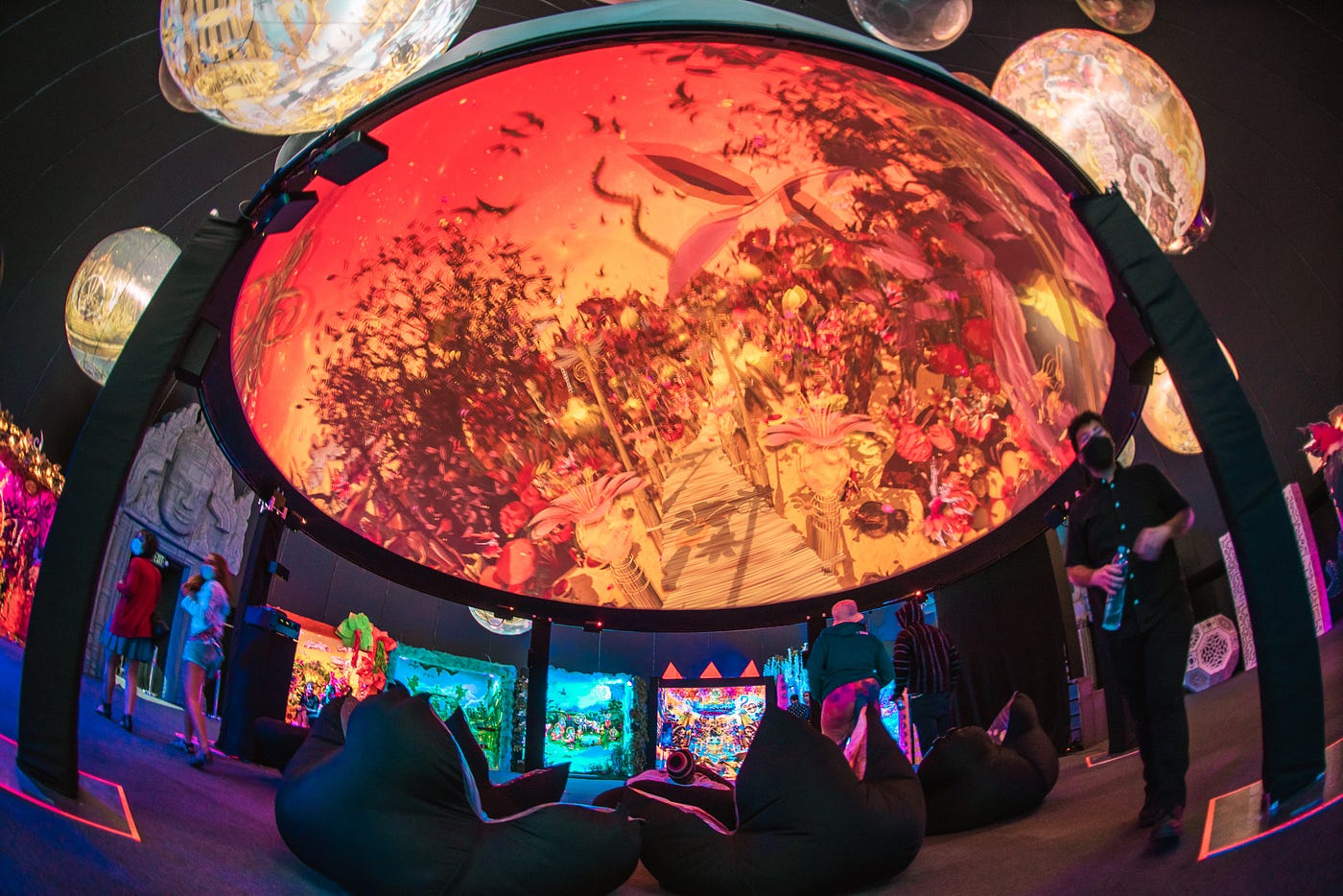
Mystic Universe — Wisdome LA
$10 — $200 (plus fees); Los Angeles, CA; Ongoing
Wisdome LA seems to have no issues with imposter syndrome. Its current show, Mystic Universe, states that, “for the first time in the history of mankind … we can see the ideas of ancient sages embodied in the works of modern artists.” (To start, Hilma af Klint might want a word?)
For context, Wisdome LA is billed as “LA’s first and largest immersive art and music dome park.” Anchored by five geodesic domes, the 24,000-square-foot park in DTLA includes food trucks, costume rentals, and retail options for all of your metaphysically-themed tchotchke needs. Mystic Universe features digital work by artists such as Julius Horsthuis, Igor Baranko, and Luminokaya. If you’ve been to Coachella, Burning Man, or Artechouse you may be familiar with members of the lineup.
For Horsthuis’ show, Fractal Time, the animation was crisp and textured, layered with rich, gorgeous detail. The movement was both subtle and dynamic; at times I closed my eyes because the sense of motion was so powerful. I’m a fan of Horsthuis and I’m also a fan of “Big Fun Art” (who hurt you, Kealy Boyd?). The key difference here is Wisdome is all spectacle and no substance. Although domed projection technology has advanced, the narrative frameworks haven’t. Mystic Universe is a selfie palace and no amount of breath work, Instagrammable grottos, rentable crystal headdresses, or “Wholly Mother of Health Salad[s]” will remedy that.
The dilemma highlights an opportunity for creators and producers to evaluate domed experiences outside of the festival circuit (and their captive audiences), so that this unique, immersive medium can deliver resonant experiences centered around story. For the moment, however, story is the responsibility of Mystic Universe’s audience; the only way to transcend Wisdome LA is to flex those role-playing muscles and craft your own mystical tale.
— Laura Hess, Arts Editor
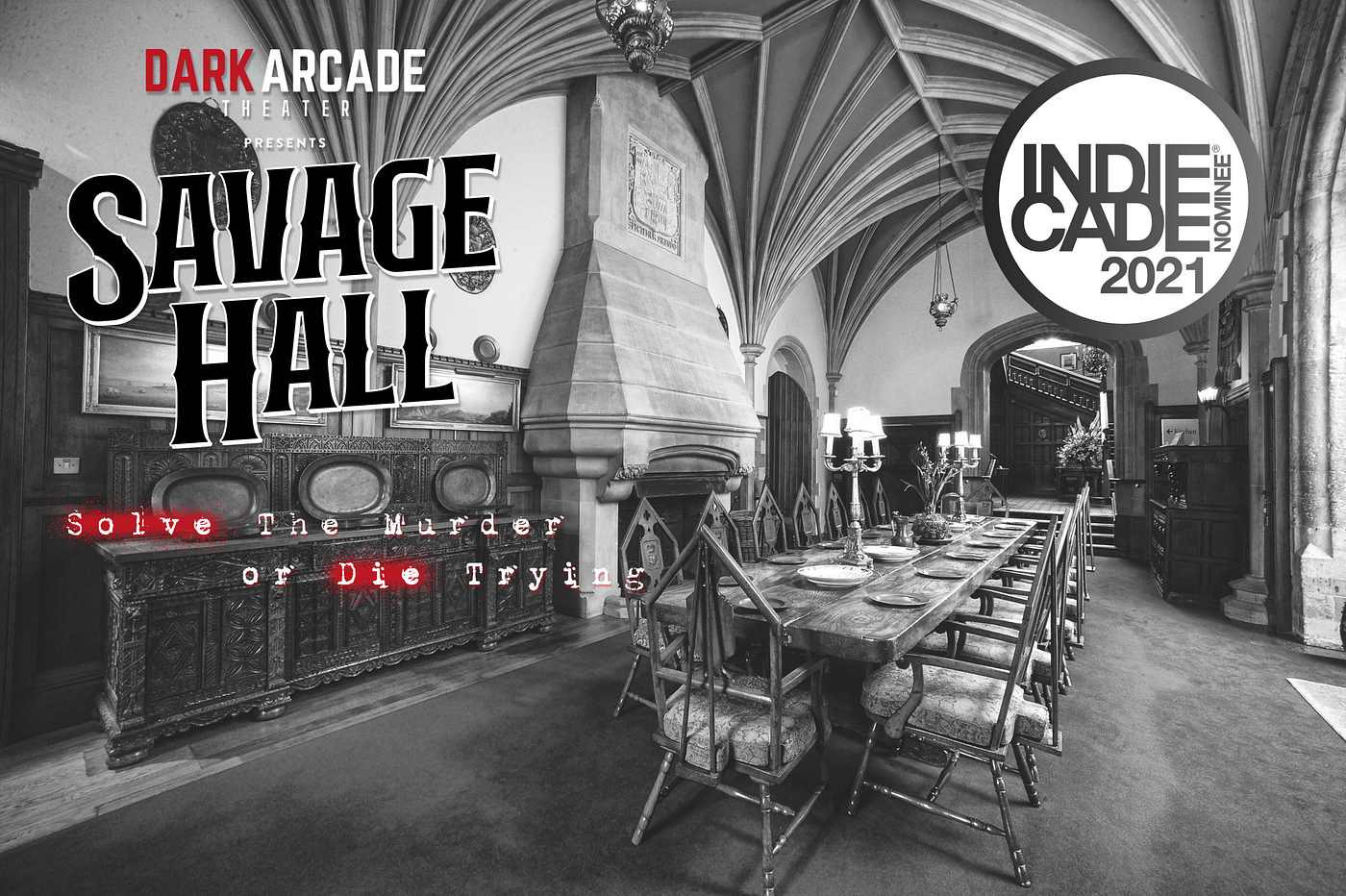
Savage Hall — Dark Arcade Theater
$195 per group for 4 to 6 players; Remote (Zoom); Ongoing
Online murder mysteries are growing up. Gone are the days of cheesy character sheets and awkward silences. Dark Arcade has ushered us into an era of beautifully-produced audio and smoky WWII ambiance with their newest game, Savage Hall. This one sits somewhere at the intersection of radio play, social deduction game, murder mystery, and live-action role play (LARP) — but is absolutely suitable for people who are new to any or all of those individual genres.
The game takes place during the final days of the London Blitz. There’s some complicated meta-narrative about radio waves and time travel experiments that explains why so much tech is involved (you’re playing online and the show leans heavily on Zoom and pre-produced audio), but I won’t get into that here. The meat of the experience happens when players embody their characters during periods of free-play discussion. My group of seasoned LARPers pulled out all the stops: accents, real tears — the whole nine yards. But we struggled to lose ourselves in our roles. Frequent toggling between main and meta-narrative was disorienting for those of us who are used to having more in-game autonomy.
Which is why I’m recommending Savage Hall to people who are right on the cusp of embracing immersive. Dark Arcade cleverly delivers character information through real-time audio and damn, they get that part right. Every character has their own audio track, so everyone in your group will hear a different version of events. This removes barriers for players who might be nervous about character sheets or complicated rules. The results are satisfyingly intuitive and different enough to be worth anyone’s time. So yes — uneven gameplay was frustrating, but ultimately mitigated by an attentive host and generous players. The ghosts of Savage Hall still call, and I recommend you answer.
— Leah Davis, New England Correspondent
Discover the latest immersive events, festivals, workshops, and more at our new site EVERYTHING IMMERSIVE, new home of NoPro’s show listings.
NoPro is a labor of love made possible by our generous Patreon backers. Join them today!
In addition to the No Proscenium website, our podcast, and our newsletters, you can find NoPro on Twitter, Facebook, YouTube, Instagram, in the Facebook community Everything Immersive, and on our Discord.















Discussion